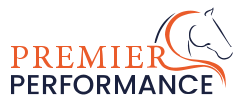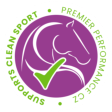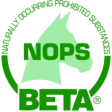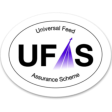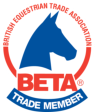in basket
TOP OFFER - SUMMER20 - 20% OFF and 4 FREE seasonal products!
Essential vitamins and minerals for the healthy horse

Vitamins and minerals are two of the six essential nutrients required by horses. Horses only need relatively small quantities of vitamins and minerals; however, an imbalance of these can be detrimental to your horse’s health and performance. The foundation of good nutrition is a balanced diet that ensures your horse receives all of the essential nutrients needed on a daily basis. Providing adequate vitamins and minerals in your horse’s diet is not an added bonus, but rather an absolute must as they are essential for your horse’s health.
Unfortunately, vitamin and mineral supplements are the most undervalued and underused supplement. You may not see the difference of feeding a vitamin and mineral supplement straight away, but your horse will feel the benefit. Moreover, your horse’s long-term health and performance may suffer as a result of you not providing adequate vitamins and minerals in his/her diet.
Minerals in the equine diet
Minerals are inorganic nutrients required in relatively small quantities by the horse. Minerals are classified as either: macro (or major) minerals, and micro minerals (or trace elements). Macro minerals are those that are required and typically found in concentrations in the diet measured as grams per kilogram (g/kg), whilst micro minerals are required and typically measured in milligrams per kilogram (mg/kg).
Essential macro and micro minerals
Macro minerals:
- Calcium
- Phosphorus
- Magnesium
- Sodium
- Chloride
- Potassium
- Sulphur
Micro minerals:
- Iron
- Zinc
- Copper
- Selenium
- Manganese
- Iodine
- Cobalt
Macro mineral requirements in the equine diet
The mineral requirements of a horse vary depending on bodyweight, age, physiological condition (e.g. pregnancy and lactation) and activity level (e.g. how much work the horse is doing). For example, mares that are in the late stages of pregnancy or are lactating, and young horses that are growing, will have a higher requirement for some specific minerals (e.g. calcium and phosphorus) than other horses do. Most concentrate feeds have consistent mineral contents and can be estimated from nutrient tables; however, minerals in forages can vary significantly due to soil mineral content, plant species, stage of maturity of the forage at harvest and harvest conditions etc. Therefore, for an accurate measurement of minerals in forages, they should be sent to a laboratory for analyses.
If minerals are provided at less than the recommended amounts then this can result in a deficiency, whilst excessive amounts of minerals in the diet can result in toxicity. Whilst the amount of minerals in the diet are important, the ratio of all minerals with each other and other components of the diet needs to be taken into account as this can influence absorption, metabolism and/or excretion. Therefore, excesses or deficiencies of one mineral can alter the requirements of others. For example, the ratio of calcium and phosphorus is important to consider as an imbalance can result in an orthopaedic disorder (especially in young horses). The ratio of calcium to phosphorus should be around 2:1, with twice as much calcium as phosphorus required. This can vary slightly; however, a ratio of less than 1:1 or less, where the phosphorus exceeds the calcium can result in interference on the absorption of calcium even if adequate amounts of calcium are supplied in the diet.
The calcium and phosphorus concentrations of forages are variable, with legumes (such as alfalfa) containing higher levels of calcium compared to grasses. Good quality forages are typically adequate in magnesium, potassium and sulphur. However, to meet sodium and chloride requirements, additional salt may be required. This is particularly important in performance horses that will sweat during exercise and will therefore require sodium and chloride plus potassium to replace excess mineral loss via sweat. Cereal grains (such as oats, barley and maize) are typically high in phosphorus and low in calcium. Therefore, it is important to know the mineral content of feedstuffs to ensure that the calcium to phosphorus ratio is appropriate.
Micro mineral requirements in the equine diet
The quantity of micro minerals required for normal growth, development and metabolism are small; however, meeting these requirements is absolutely essential. The micro mineral content of feedstuffs is extremely variable and needs to be determined by laboratory analysis. Also, similar to that seen for major minerals, interactions can occur between micro minerals that can affect their absorption and utilisation. For example, high levels of zinc can affect copper utilisation. It can therefore be complicated to formulate a diet using a range of feedstuffs to satisfy all of the horse’s mineral requirements; therefore, supplementing your horse’s diet with a minerals supplement is often the most practical solution. The safety margin for most trace minerals is reasonably wide and therefore allows you to use a mineral supplement alongside the rest of the ration without the risk of exceeding the maximum tolerance levels.
You can provide mineral supplementation by providing a free-choice micro mineral lick. The downside to this approach is that it is very difficult to ensure that your horse is getting the minerals it needs; you can’t assume that because s/he is not eating the supplement that it is not required. The alternative is to use a commercial complete mineral supplement that contains both major minerals and micro minerals and is added to the diet at the recommended rate for your horse. This approach ensures that your horse is consuming the required amount of minerals; however, the supplement should be chosen to complement the ration that is fed. For example, if a forage-only ration is used then a forage balancer supplement is likely to be the most appropriate choice. If your horse is being fed a commercial mix, which typical contains macro and micro minerals then a different type, or even no, supplement may be required depending on how much concentrate feed is fed. For example, if you are feeding a commercial mix at the recommended amount for your horse then your horse will likely be receiving the appropriate amount of minerals without further supplementation. However, if you are feeding less or more than this then you may be under or over feeding minerals. Also, if you are feeding additional feedstuffs alongside the concentrate mix (for example oats, barley, sugar beet pulp etc.), it is important to consider the impact of the mineral contribution that these additional feedstuffs make to the overall ration.
Vitamins in the equine diet
Vitamins are organic compounds that are required in relatively small amounts by the horse. However, although they are required in small quantities, they are a critical part of your horse’s ration to promote and regulate a number of body functions and if they are lacking in the diet then deficiency diseases may occur.
Vitamins are typically divided into two groups:
- Fat soluble vitamins (A,D,E and K)
- Water soluble vitamins (C and B-complex)
All vitamins, except A and E are produced in the body. Vitamin A (or its precursor beta-carotene) and vitamin E are present in high concentrations in fresh green forages or newly harvested hay. Therefore, a horse that is grazed for a significant portion of the day will meet its vitamin A and E requirements. However, during the winter when a conserved forage, such as hay, is fed supplementation may be required as the hay will lose its vitamin content during storage. Vitamin D is produced in the skin when your horse is exposed to sunlight. However, your horse does need to be exposed to around four to six hours outdoor light per day (including cloudy days) to meet their vitamin D requirements without dietary supplementation. Therefore, horses that are kept indoors will have higher dietary requirements for vitamin D compared to those kept at grass. Similarly, horses that are rugged for a significant proportion of time also have higher dietary requirements for vitamin D due to the lack of exposure of their skin to daylight. Sun-cured forages (such as hay) contain vitamin D. However, if a horse is not exposed to sunlight or is fed a poor-quality hay, then a supplement may be required. Commercial vitamin/mineral supplement combinations are available, as well as commercial mixes which contain the necessary vitamins. Feeding these additional supplements even when your horse’s vitamin A and E requirements have been met by pasture does not typically present a problem since, although excess intakes can be toxic, levels ten times higher than required are needed for this to occur.
Specific daily requirements for vitamins K, C and B-complex are not defined since they are usually available in sufficient quantities from a combination of the ration, microbial synthesis in the horse’s gastrointestinal tract and production by the horse’s liver. Vitamins K and B are generally present in all good quality forages, fresh and dried (depending on length of storage) and are also produced by the microbes in the intestine. Therefore, it is unlikely that your horse will be deficient in these vitamins unless they are on a low forage diet and/or under severe stress. Vitamin C is synthesised in the liver and therefore vitamin C deficiency is rare.
Vitamin and mineral provision: Should I supplement?
Vitamins and minerals are an important part of your horse’s diet. To accurately determine whether a nutritional supplement is required you need to know the type and amount of feed that a horse is being fed along with the nutritional composition of these feeds. However, in general many of us do not test our horse(s) forage and/or pasture and therefore it is difficult to ascertain whether the horse requires a nutritional supplement.
Whilst fresh pasture typically contains high levels of vitamins this reduces over the winter months and is also the time when we supplement with conserved forage. However, once grass is conserved as hay or haylage then the amount of vitamins present is reduced. Different soil types also affect the mineral status of pasture and conserved forage. Grass and conserved forage is generally short of some minerals and therefore it is advisable to feed a well-formulated multi-vitamin and mineral supplement. Moreover, unlike humans, horses are fed the same diet for long periods of time and therefore any deficiencies in that diet will be more likely to impact on a horse compared to a human who eats a more varied diet.
Article written for Premier Performance by Professor Jo-Anne Murray.
